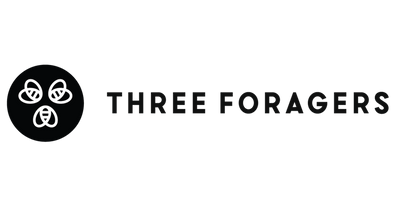

· By Three Foragers
Plants To Plant For National Garden Month
If you didn’t already know, April is National Garden Month, making this the perfect time to start building, or adding to, your garden. To help kick it off, our honey farm wants to share with you some flowers that your neighbourhood bees will absolutely love. Keep in mind, you don’t have to own a large yard to have a garden. Even a small amount of porch space for some potted plants is enough. So dust off your spades, grab some soil, and let’s plant some plants!
If you’re looking to attract some bees to your yard, there are a few things to keep in mind. First, bees see differently from humans. They have five eyes and can detect ultraviolet light which helps them find their favourite flowers. Purple, violet, and blue coloured flowers attract bees the best. You will also want to plant flowers that bloom at different times of the year. That way, your garden will be buzzin’ all the way from spring till fall.
In The Spring
Spring is a crucial time for the survival of bee colonies as they haven’t been able to make any honey all winter long! Having some flowers that bloom early in the year, even when there is still some snow on the ground, is an incredible boost for bee populations. Chives, crocuses, and snowdrops all make beautiful springtime flowers that bees are sure to visit.
Chives
Chives are perennials that bloom in the springtime with beautiful purple flowers. Make sure you plant them early in the season in areas that receive full sunlight. They also thrive in fertile, moist, and well-draining soil. As an added bonus, you can harvest the chives and add them to a variety of home-cooked dishes!
Crocuses
Crocuses are made up of about 90 different perennial plants. Many are very early bloomers, often showing up before the snow has melted away. They come in a variety of colours including the bee’s favourite blue and purple, and once planted, are able to thrive with little care. Ideally, they should be planted in the fall before the ground freezes, but if you don’t have a time machine, you can pick some up at your local flower shop.
Snowdrops
Similar to crocuses, snowdrops are able to sprout through the snow during early spring. These beautiful plants dangle their white flower heads upside-down from an arching stem, adding some character to your garden. They grow well in partially shaded areas with rich soil. Planting them around deciduous trees or shrubs provides the perfect amount of shade and compost, in the form of falling leaves, for them to thrive.
In The Summer
These hardy flowers will soak up the sun when the heat starts to turn up. During the summer, bee colonies reach their maximum sizes and are on the lookout for the following plants. Raw honey production is in full swing, so the need for nectar is high.
Sunflowers
Nothing says “summer has arrived” like sunflowers. These tall plants have large open faces that call out and attract bees. These plants are heliotropic, which means that they follow the sun across the sky. To grow sunflowers in your yard, make sure they get direct sunlight and are planted in loose, well-draining soil.
Purple Coneflower
Also known as echinacea, purple coneflowers bloom all summer long, are drought resistant, and are easy to care for. They grow in poor or lean soil and with regular rainfall, require no additional watering. These plants are sure to attract bees and other pollinators like butterflies to your yard.
Lavender
Famous for its uses in soaps, perfumes and infusing raw honey, lavender is a crowd favourite of both gardeners and bees. This Mediterranean perennial (for Canadians with more mild winters) should be planted in the spring with access to full sunlight and in moderately fertile soil. The scent of lavender has an incredibly calming effect on humans and helps attract bees for pollination.
In The Fall
Nearing the end of the year, bee populations start to dwindle but don’t worry, this is all part of their survival mechanisms. They are still producing and storing honey to ready themselves for the long winter months ahead. To help give your bees a final honey production push, make sure these plants are somewhere in your garden.
Joe Pye Weed
Joe Pye weed is a tall, late-blooming wildflower that was once used as an herbal remedy for fevers. Its pinkish purple flower clusters contain pollen and nectar that bees crave, and the tubular shape also attracts hummingbirds. If you’re looking to grow Joe Pye weed yourself, know that they enjoy moist and fertile soil, with partial sunlight. Keep an eye on them though—if the conditions are perfect they can get a little out of hand!
Asters
Asters come in a wide variety of colours and heights as over 600 varieties exist! But all asters share a similar daisy-like quality and provide bees and other pollinators with some of their last great feeding opportunities of the season. To raise them in your home garden, plant seeds in the springtime. Asters love full to partial sun and loamy, well-draining soil.
At Our Honey Farm
At Three Foragers, our bees feed on alfalfa, sweet clover, and a variety of wildflowers that bloom throughout the honey-making season. The types of flowers from which bees collect nectar influence the taste of the raw honey they produce. That’s why our raw and creamed honey has a smooth, mild, and subtly sweet flavour. If you have a garden that keeps the bees coming back for more, let us know which flowers you planted in the comments below or send our honey farm a message on Facebook!
